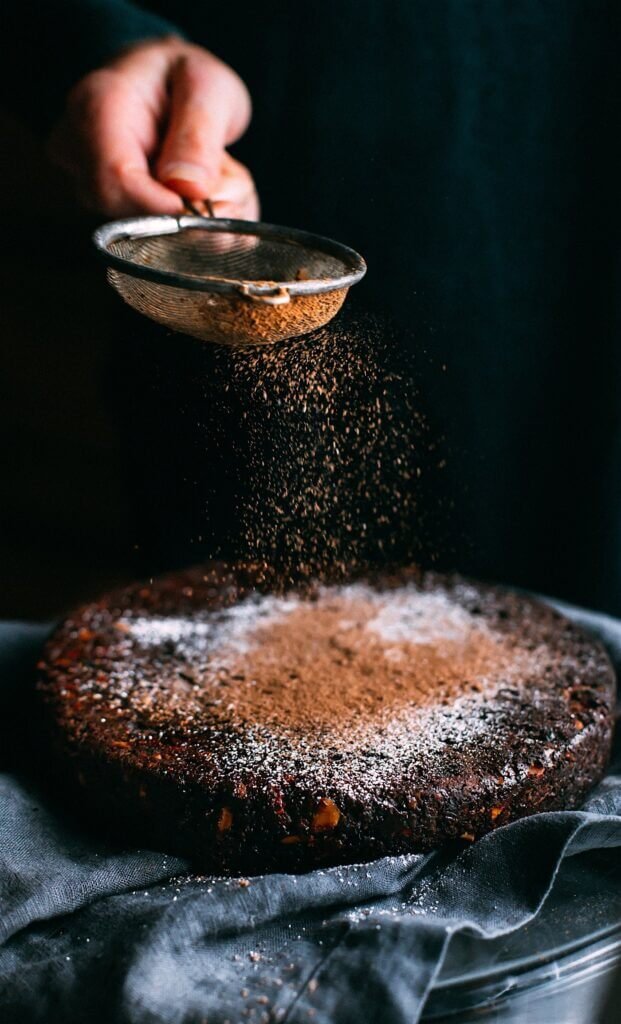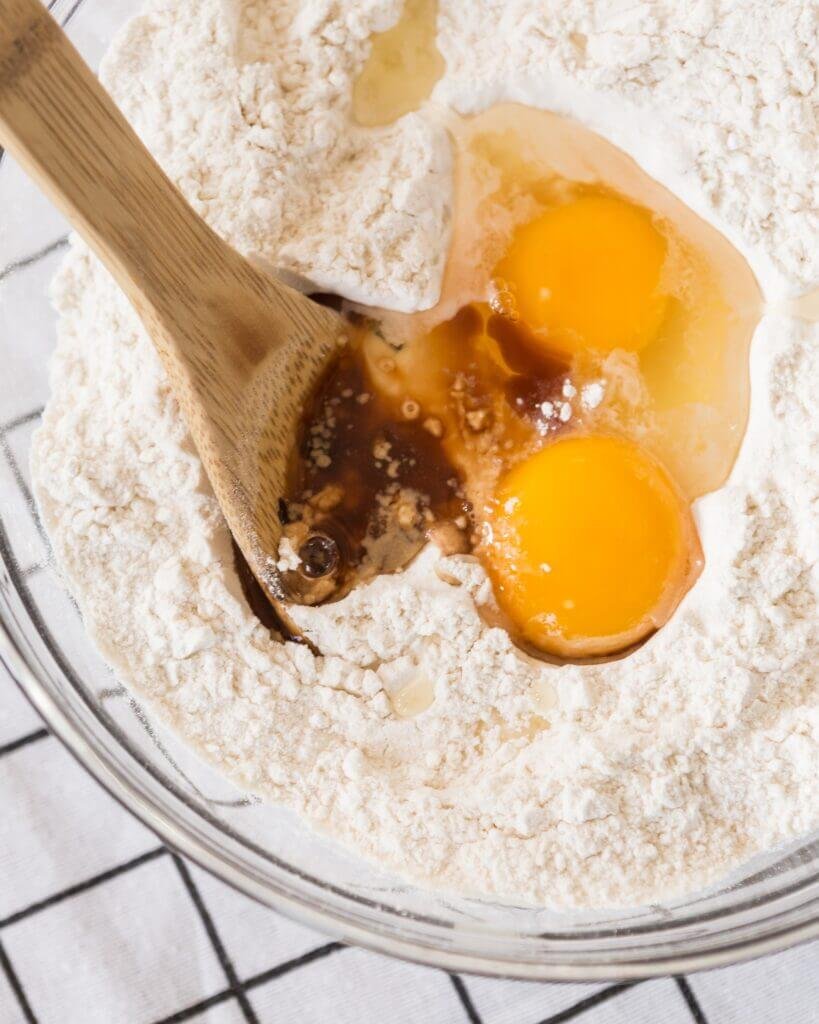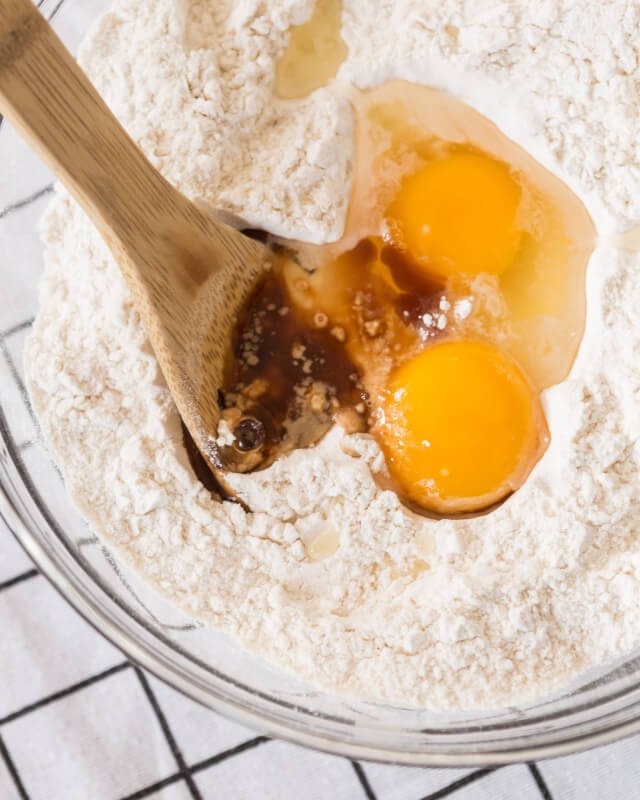Do you ever find yourself craving a warm, fluffy muffin straight from the oven? Well, we’ve got just the article for you! In “What Are The Secrets To Baking Perfect Muffins?”, we’ll uncover the tips and tricks that will have you baking the most delightful muffins in no time. From selecting the right ingredients to mastering the perfect texture, get ready to impress your friends and family with your baking prowess. So grab your apron and let’s get started on your muffin-making adventure! Choosing the right ingredients is the first step towards baking perfect muffins. Each ingredient contributes to the taste and texture of the final product. Let’s take a look at some key ingredients and how they can affect your muffins.

Flour
Flour is the base of any muffin recipe, providing structure to the baked goods. All-purpose flour is commonly used in muffin recipes because of its versatility. However, you can also experiment with alternative flours like whole wheat flour or almond flour to add a nutty flavor and extra nutrition to your muffins.
Leavening Agents
Leavening agents such as baking powder and baking soda are responsible for making the muffins rise and become light and fluffy. It’s important to use the right amount of leavening agents as specified in the recipe to avoid an overly dense or flat result.
Sugar
Sugar not only adds sweetness to the muffins but also contributes to their moistness and tenderness. Granulated sugar is commonly used, but you can also experiment with other types of sweeteners like brown sugar, honey, or maple syrup to enhance the flavor profile of your muffins.
Fats and Oils
Fats and oils add richness and moisture to muffins. Butter is a classic choice for its flavor, but you can also use vegetable oil, coconut oil, or even applesauce as a healthier alternative. Be sure to follow the recipe’s instructions on whether to use melted or softened butter.
Liquid Ingredients
Liquid ingredients such as milk, buttermilk, yogurt, or even fruit juices provide the necessary moisture and help bind the ingredients together. They also add flavor and contribute to the texture of the muffins. Make sure to measure the liquids accurately to achieve the desired consistency.
Add-ins
Add-ins like fruits, nuts, chocolate chips, or even shredded coconut can take your muffins to the next level. They add flavor, texture, and visual appeal to your baked goods. Be creative and experiment with different combinations to find your favorite mix-ins.
Understanding the mixing process is crucial to achieving the perfect muffin texture. Let’s dive into the techniques and potential pitfalls of mixing.
Mixing Techniques
When it comes to mixing muffin batter, less is more. Overmixing can lead to tough and dense muffins. Gently stir the dry and wet ingredients together just until they are combined. A few lumps in the batter are okay; they will disappear during baking.
Overmixing
Overmixing the muffin batter can result in the development of gluten, leading to a dense and chewy texture. It’s important to mix just until the ingredients are combined to avoid this issue. It’s better to undermix slightly than to overmix.
Alternatives to Mixing by Hand
If you prefer a quicker and easier method of mixing, you can use a stand mixer or a hand mixer on low speed. Just be cautious not to overmix even with these appliances. Alternatively, you can use a whisk or a wooden spoon for a more traditional approach.
Mastering the baking temperature and time is essential to ensure your muffins are perfectly cooked and moist. Let’s take a closer look at each aspect.
Preheating the Oven
Always remember to preheat your oven before baking muffins. Preheating ensures that the oven reaches the desired temperature and provides a consistent heat for even baking. Follow the recipe’s instructions on the recommended oven temperature.
Oven Temperature
The correct oven temperature is key to achieving the desired texture and doneness of your muffins. High temperatures can cause the muffins to brown too quickly on the outside while still being undercooked on the inside. On the other hand, low temperatures may result in flat and dense muffins. Invest in an oven thermometer to ensure accuracy.
Baking Time
Follow the recipe’s recommended baking time as a guideline but keep an eye on your muffins towards the end of the baking time. Every oven is different, and factors like altitude and pan size can affect baking times. Use a toothpick or a cake tester to check if the muffins are cooked through by inserting it into the center. If it comes out clean or with a few crumbs, the muffins are done.
Testing for Doneness
To ensure your muffins are perfectly baked, it’s important to test for doneness. The toothpick or cake tester method mentioned earlier is a common way to check if the muffins are cooked through. Another indicator is the muffins pulling away from the sides of the pan. Trust your instincts and experience to determine when your muffins are ready.
Using the right equipment can greatly influence the outcome of your baking. Let’s explore some essential tools for baking perfect muffins.
Muffin Pan
Invest in a good quality muffin pan that is sturdy and nonstick. A standard size muffin pan with 12 cups is the most commonly used. However, you can also use mini muffin pans or jumbo muffin pans for smaller or larger muffins, respectively.

Liners or Greasing
Choose between using paper liners or greasing the muffin pan. Paper liners make it easier to remove the muffins, while greasing the pan directly provides a more crispy and defined crust. Experiment with both methods to find your preferred option.
Measuring Tools
Accurate measurements are crucial in baking. Use measuring cups and spoons for dry ingredients, and a liquid measuring cup for liquids. It’s important to level off the dry ingredients, especially flour, to avoid excess and affect the texture of the muffins.
Mixing Bowls
Choose mixing bowls that are big enough to comfortably mix all the ingredients without them overflowing. Opt for bowls made of stainless steel or glass, as they are sturdy and do not retain any odors or flavors from previous use.
Cooling Rack
After taking the muffins out of the oven, transfer them to a cooling rack. Cooling racks elevate the muffins and allow air to circulate around them, preventing condensation from making the bottoms soggy. This helps in achieving an evenly crisp crust.
Properly preparing your muffin pan is essential to ensure easy removal of the muffins and prevent sticking. Let’s explore different ways to prepare the muffin pan.
Lining the Muffin Cups
Using paper liners is a popular choice because it makes it easier to remove the muffins from the pan. Simply place a paper liner in each muffin cup and fill it with the batter. The liners can also add a decorative touch to your muffins.
Greasing the Muffin Pan
Greasing the muffin pan directly is an alternative to using paper liners. You can use butter or vegetable oil to grease the pan, making sure to cover the bottom and sides of each cup. This method can result in a slightly crispier crust but may require more effort in removing the muffins.
Using Cooking Spray
Another way to prevent sticking is by using cooking spray. Spray each muffin cup with a thin layer of cooking spray to ensure easy removal. This method is quick and convenient, but it might not provide the same level of crispness as grease or paper liners.
Enhancing flavor and texture is a wonderful way to make your muffins stand out. Let’s explore some tips and tricks to elevate your muffin game.
Adding Spices and Extracts
Spices like cinnamon, nutmeg, or ginger can add warmth and depth to your muffins. Experiment with different combinations to find your preferred flavor profile. Additionally, extracts like vanilla, almond, or lemon can bring a delightful aroma and taste.
Using Buttermilk or Yogurt
Buttermilk or yogurt can add tanginess and moistness to your muffins. They also contribute to a tender crumb and can slightly lighten the texture. Replace part or all of the liquid in the recipe with buttermilk or yogurt for a delightful twist.
Incorporating Sour Cream
Adding sour cream to your muffin batter can result in incredibly moist and tender muffins. It enhances the richness and adds a subtle tang. Experiment with different ratios of sour cream to other ingredients to find the balance that suits your taste.
Using Sour Fruits
Sour fruits like berries or diced apples can add a burst of flavor to your muffins. They bring a natural sweetness and tang while adding moisture and texture. Fold them gently into the batter to distribute them evenly throughout the muffins.
Adding Nuts or Seeds
Nuts or seeds can provide a crunchy element and add depth to your muffins. Options like walnuts, almonds, pecans, or sunflower seeds can complement the flavors and provide a delightful contrast to the soft crumb. Chop the nuts or seeds to your preferred size before incorporating them into the batter.
Experimenting with Fillings
Get creative with fillings to surprise your taste buds. From cream cheese, chocolate ganache, or fruit preserves to peanut butter, Nutella, or even caramel, there are endless possibilities to add a delicious surprise at the center of your muffins.
Avoiding common mistakes is crucial to achieving the perfect muffin every time. Let’s explore some common pitfalls and how to avoid them.
Overfilling the Muffin Cups
It’s important not to overfill the muffin cups as the batter will rise during baking. Overfilling can cause the muffins to overflow and lose their shape. Fill the cups about three-quarters full to allow room for rising.

Deflating the Batter
When incorporating wet and dry ingredients, avoid overmixing or stirring too vigorously. This can deflate the batter and result in dense muffins. Gently fold the ingredients together until just combined.
Not Testing the Oven Temperature
Before baking, it’s crucial to check if your oven is at the correct temperature. Oven thermostats can be inaccurate, leading to undercooked or overcooked muffins. Use an oven thermometer to ensure accuracy and adjust accordingly.
Skipping Resting Time
Allowing the muffin batter to rest for a few minutes before baking can help the flour absorb the liquid and result in a lighter texture. It also allows the flavors to meld together. Follow the recipe’s instructions for resting time if mentioned.
Ignoring the Cooling Process
Resist the temptation to devour the muffins right out of the oven. Allowing them to cool in the pan for a few minutes before transferring them to a cooling rack helps them set and prevents them from falling apart.
Achieving a perfect muffin top is a goal for many bakers. Let’s explore some tips and techniques to achieve that coveted crispy and domed muffin top.
Using the Correct Batter Consistency
The consistency of the batter plays a role in achieving a perfect muffin top. It should be thick yet easily pourable. If the batter is too thin, it might cause the muffins to spread and result in a flat top. Adjust the liquid and dry ingredients as needed to achieve the desired consistency.
Filling the Cups Properly
To achieve a nicely domed muffin top, fill the muffin cups three-quarters full. This allows room for the batter to rise and create that beautiful peekaboo dome. Using an ice cream scoop or a large spoon can help ensure consistent portioning.
Baking Powder vs Baking Soda
Understanding the difference between baking powder and baking soda is crucial when it comes to achieving a perfect muffin top. Baking powder creates bubbles that help the muffins rise and dome, while baking soda helps with browning and flavor. Follow the recipe’s instructions on which to use or a combination of both.
Creating a Streusel Topping
A streusel topping not only adds visual appeal but also enhances the texture and flavor of the muffin top. Mix together flour, sugar, and butter until crumbly, then sprinkle it generously on top of each muffin before baking. The streusel will become golden and crisp, creating a delightful contrast with the soft interior.
Brushing with Butter
Brushing the tops of the muffins with melted butter before baking can create a beautiful golden brown crust. It also adds a rich buttery flavor to the muffins. Use a pastry brush or a clean finger to apply a thin layer of butter on the surface of each muffin.
Properly storing and reheating muffins ensures freshness and prolongs their enjoyment. Let’s explore some tips on storing and reheating muffins.
Storing at Room Temperature
Muffins can be stored at room temperature for up to a few days. Place them in an airtight container or wrap them individually in plastic wrap to prevent them from drying out. Avoid storing them in the refrigerator as this can make them stale.
Freezing Muffins
If you have a surplus of muffins or would like to make a larger batch for future enjoyment, freezing is a great option. Allow the muffins to cool completely, then place them in a freezer-safe container or bag. They can be frozen for up to three months. Thaw them at room temperature or briefly warm them in the oven before enjoying.
Reheating Techniques
When reheating muffins, it’s important to be gentle to avoid drying them out. You can lightly toast them in a toaster oven or microwave them for a few seconds. To refresh the muffins’ texture, place them in a 350°F (175°C) oven for a few minutes until warmed through.
Preventing Moisture Loss
To prevent muffins from losing moisture during storage or reheating, placing a damp paper towel or a slice of bread in the container can help retain moisture. Make sure the paper towel or bread does not come into direct contact with the muffins to avoid making them soggy.
Troubleshooting common issues is an important skill for any baker. Let’s explore some common problems and how to resolve them.
Flat Tops
If your muffins have flat tops, it could be due to several factors. Overmixing the batter can lead to the development of too much gluten, resulting in a dense and flat top. Ensure you mix just until the ingredients are combined. Additionally, expired leavening agents or incorrect measurements can also cause flat tops. Check the expiration dates and measure accurately.
Dry or Dense Muffins
Dry or dense muffins can be disappointing. It’s crucial to measure the flour accurately and avoid overmixing the batter. Using the correct amount of fats or oils can also contribute to the moistness and tenderness of the muffins. Adding sour cream, yogurt, or buttermilk can help add moisture and improve the texture.
Soggy Bottoms
Soggy bottoms can be a result of excess moisture or improper cooling. Make sure to cool the muffins on a cooling rack immediately after taking them out of the oven. Allowing them to sit in the muffin pan can trap steam and create moisture. Additionally, be mindful of using watery ingredients or overfilling the muffin cups, which can result in sogginess.
Uneven Baking
Uneven baking can occur if the oven temperature is not calibrated correctly or if the muffin cups are not filled evenly. A simple solution is to rotate the muffin pan halfway through baking to ensure even heat distribution. It’s also important to fill the cups to the same level to ensure consistent baking.
Tasteless Muffins
If your muffins lack flavor, first check if you have followed the recipe’s instructions regarding spices, extracts, or add-ins. Adding more spices or extracts can help intensify the flavor. You can also experiment with different flavors or combinations of fruits, nuts, or other add-ins to enhance the taste.
With these tips and techniques, you are well on your way to baking perfect muffins every time. Enjoy the process, experiment with flavors, and share your delicious creations with friends and family. Happy baking!


